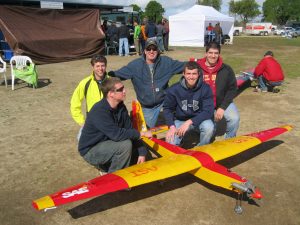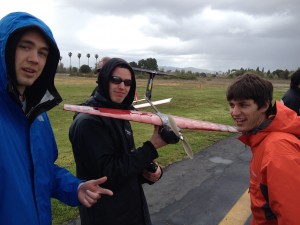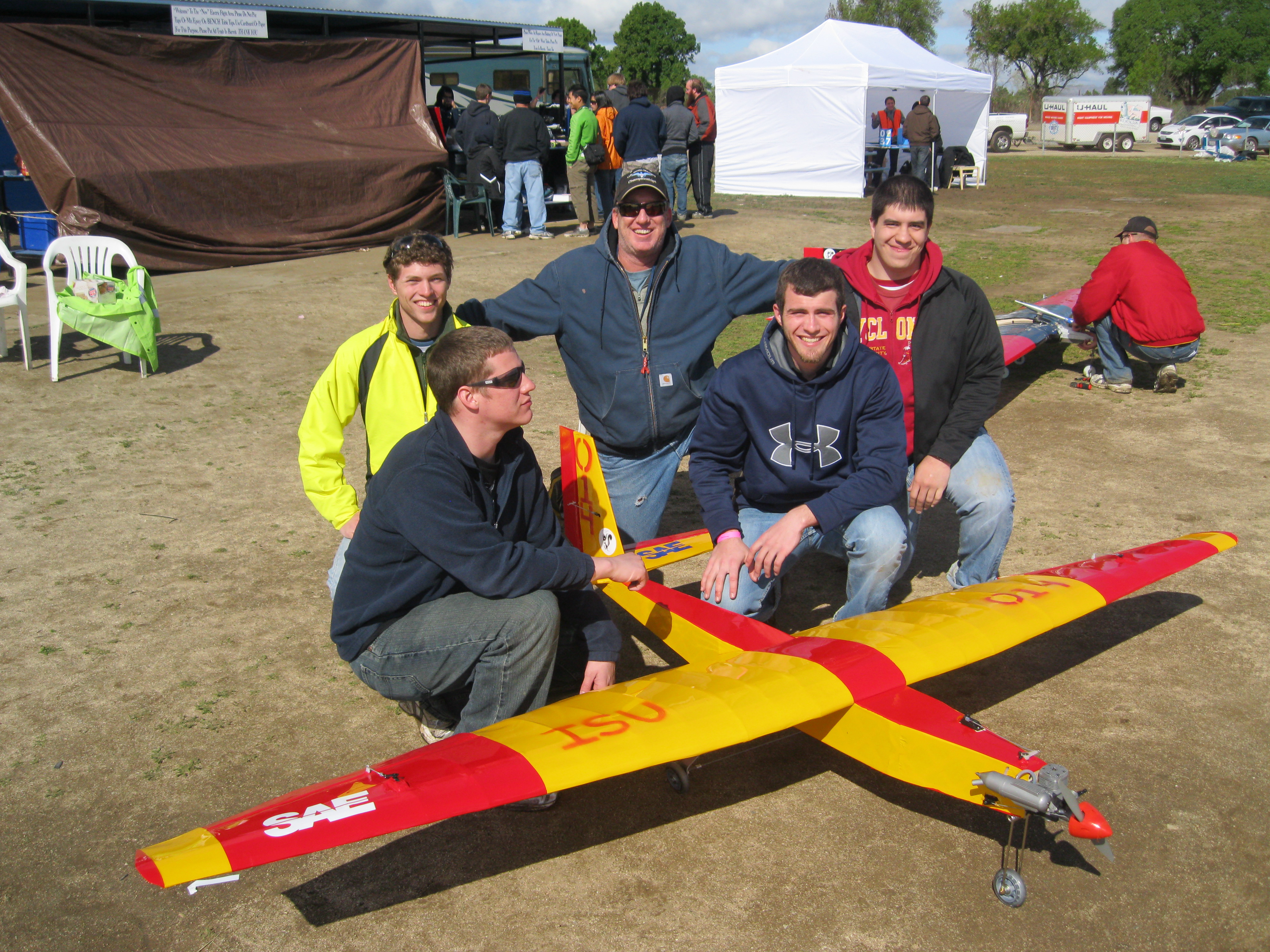
A dozen Iowa State engineering students traveled to Van Nuys, California, over spring break to participate in the Society of Automotive Engineers (SAE) Aero Design West 2012 competition. The Iowa State team faced tough challenges, contending against students from all over the world, but left with an abundance of new skills and knowledge.
The competition puts real-life engineering problems into the hands of undergraduate and graduate students. Participants design a functional aircraft model while adhering to a specific set of restrictions and requirements within three classes: Regular, Advanced, and Micro.
The Regular class focuses on understanding the basics of flight; Advanced integrates several disciplines, including aeronautical, mechanical, electrical, and computer engineers, to create an autonomous flight; and Micro incorporates conflicting requirements—carrying the highest payload fraction while simultaneously pursuing the lowest empty weight.
“Overall, we are required to perform trade studies and make compromises to arrive at a design solution to optimally meet the mission requirements and conform to the configuration limitations,” said Jesse Bruett, senior in aerospace engineering and Regular class team member.

Iowa State had one four-person team competing in each of the three classes. Before the teams made the trip to California, they were required to create a 30-page design report and technical presentation to be delivered the day before the flying competition.
While developing their aircrafts, the teams followed a specific set of design criteria. The Regular class’ design had to use a specified engine, could not use fiber-reinforced plastics, and had to be under the maximum combined length, width, and height of 225 inches. Similarly, the Micro team had to fit its aircraft into a 12x24x8 inch box, assemble it in less than three minutes, and the design had to contain a payload box of 2x2x5 inches. The Advanced group was not restricted in terms of materials, size, or engine, but was required to design a data acquisition system to record takeoff and landing distances.
Bruett said the teams addressed the same challenges engineers face on a daily basis. “We were given a specific budget from the university to pay the registration cost and purchase all the materials required to construct the aircrafts,” he explained. “Furthermore, each team faced the simple challenge of working as a group to complete everything required by the deadlines while staying on top of class work.”

These elements of the project allowed participants to learn more about the industry and gain skills they may not have acquired in a classroom setting, including experience with systems engineering that is not traditionally taught in aerospace classes.
The teams also utilized several new engineering tools to reach their goals. The Regular class group used two processes that have never been used by an ISU SAE team in the past: a laser cutter to cut out their airfoils and a computer numerical controlled (CNC) router to cut out fuselage panels, which created the main body of the aircraft.
“We also learned the fundamentals of aerodynamic performance, and used support tools like Ansys Fluent Computational Fluid Dynamics (CFD) software, Ansys Workbench (structural) software, and SolidWorks,” Bruett said.
The teams finished 11 out of 35 in the Regular class, 4 out of 9 in the Advanced class, and 10 out of 21 in the Micro class. In addition to overall scores, the judges gave out awards based on individual criteria. The Advanced team was recognized with the third place Advanced Class Written Design Report Award and the third place Advanced Class Most Payload Lifted Award.
